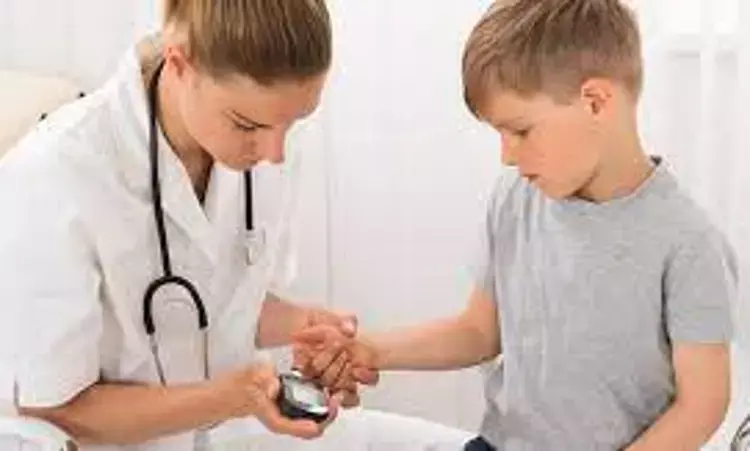- Home
- Medical news & Guidelines
- Anesthesiology
- Cardiology and CTVS
- Critical Care
- Dentistry
- Dermatology
- Diabetes and Endocrinology
- ENT
- Gastroenterology
- Medicine
- Nephrology
- Neurology
- Obstretics-Gynaecology
- Oncology
- Ophthalmology
- Orthopaedics
- Pediatrics-Neonatology
- Psychiatry
- Pulmonology
- Radiology
- Surgery
- Urology
- Laboratory Medicine
- Diet
- Nursing
- Paramedical
- Physiotherapy
- Health news
- Fact Check
- Bone Health Fact Check
- Brain Health Fact Check
- Cancer Related Fact Check
- Child Care Fact Check
- Dental and oral health fact check
- Diabetes and metabolic health fact check
- Diet and Nutrition Fact Check
- Eye and ENT Care Fact Check
- Fitness fact check
- Gut health fact check
- Heart health fact check
- Kidney health fact check
- Medical education fact check
- Men's health fact check
- Respiratory fact check
- Skin and hair care fact check
- Vaccine and Immunization fact check
- Women's health fact check
- AYUSH
- State News
- Andaman and Nicobar Islands
- Andhra Pradesh
- Arunachal Pradesh
- Assam
- Bihar
- Chandigarh
- Chattisgarh
- Dadra and Nagar Haveli
- Daman and Diu
- Delhi
- Goa
- Gujarat
- Haryana
- Himachal Pradesh
- Jammu & Kashmir
- Jharkhand
- Karnataka
- Kerala
- Ladakh
- Lakshadweep
- Madhya Pradesh
- Maharashtra
- Manipur
- Meghalaya
- Mizoram
- Nagaland
- Odisha
- Puducherry
- Punjab
- Rajasthan
- Sikkim
- Tamil Nadu
- Telangana
- Tripura
- Uttar Pradesh
- Uttrakhand
- West Bengal
- Medical Education
- Industry
Earlier initiation of GLP-1 RAs Linked to Better Glycemic Control in Adolescents with T2D

Earlier initiation of GLP-1 Receptor agonists (with in one year of diagnosis of diabetes) is linked to better glycemic control in adolescents with type 2 diabetes mellitus, according to a recent study published in the Diabetes, Obesity, and Metabolism.
Type 2 diabetes (T2D) in youth is a more aggressive disease that is associated with earlier co-morbidities compared with T2D in adulthood. Treatment guidelines for paediatric T2D first recommend lifestyle management and metformin, which rarely achieve meaningful body mass index (BMI) reduction.
The electronic health record (EHR) of a large medical centre was queried for all patients, aged 10-20 years, billed for T2D from January 2018 to August 2020 with a diagnosis of T2D after 2015. Patients were included if they had been diagnosed with T2D by a HbA1c measurement of 6.5% or higher and did not have diabetes autoantibodies. Each participant's EHR was reviewed from date of diagnosis to August 2021 to ensure that all patients had T2D, and all data at least 1 year postdiagnosis were included. This study was approved by the institution's Institutional Review Board.
The results are:
The most frequently prescribed GLP-1RA was liraglutide (n = 32; 59.3% of prescriptions); 46.9% (n = 15) prescriptions were written prior to FDA approval of liraglutide for youth with T2D. Semaglutide subcutaneous was prescribed for 13 patients (24.1%), followed by exenatide ER (n = 4; 7.4%), exenatide twice-daily (n = 2; 3.7%), deglutide (n = 2; 3.7%), and semaglutide oral (n = 1; 1.8%). The majority of GLP-1RA prescriptions (n = 35; 64.8%) were prescribed 'off-label'; either for patients prescribed liraglutide or exenatide ER prior to approval or another GLP-1RA prescribed for patients younger than 18 years. Among all patients prescribed GLP-1RAs, 66.7% (n = 36) were also prescribed long-acting insulin with a mean dose of 0.42 ± 0.32 units/kg/d. Sixteen patients (29.6%) prescribed GLP-1RAs were prescribed metformin without insulin, and 64.4% (n = 29) were prescribed both metformin and insulin.
Thus, this retrospective chart review described GLP-1RA prescribing patterns for adolescents with T2D and predominantly severe obesity (BMI > 1.2 × 95th percentile). Interestingly, patients who were prescribed a GLP-1RA within 1 year of T2D diagnosis were more probable to be in better glycaemic control and less probable to also be prescribed insulin than those who were prescribed a GLP-1RA after 1 year since their diagnosis.
Reference:
Glucagon-like peptide-1 receptor agonist prescribing patterns in adolescents with type 2 diabetes by Megan O. Bensignor et al. published in the Diabetes, Obesity, and Metabolism.
https://dom-pubs.onlinelibrary.wiley.com/doi/full/10.1111/dom.14681
Dr. Shravani Dali has completed her BDS from Pravara institute of medical sciences, loni. Following which she extensively worked in the healthcare sector for 2+ years. She has been actively involved in writing blogs in field of health and wellness. Currently she is pursuing her Masters of public health-health administration from Tata institute of social sciences. She can be contacted at editorial@medicaldialogues.in.
Dr Kamal Kant Kohli-MBBS, DTCD- a chest specialist with more than 30 years of practice and a flair for writing clinical articles, Dr Kamal Kant Kohli joined Medical Dialogues as a Chief Editor of Medical News. Besides writing articles, as an editor, he proofreads and verifies all the medical content published on Medical Dialogues including those coming from journals, studies,medical conferences,guidelines etc. Email: drkohli@medicaldialogues.in. Contact no. 011-43720751


